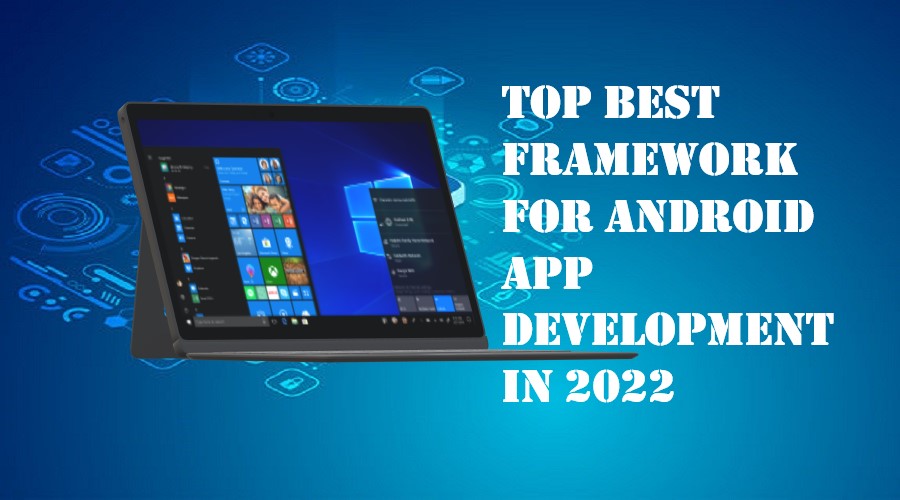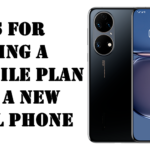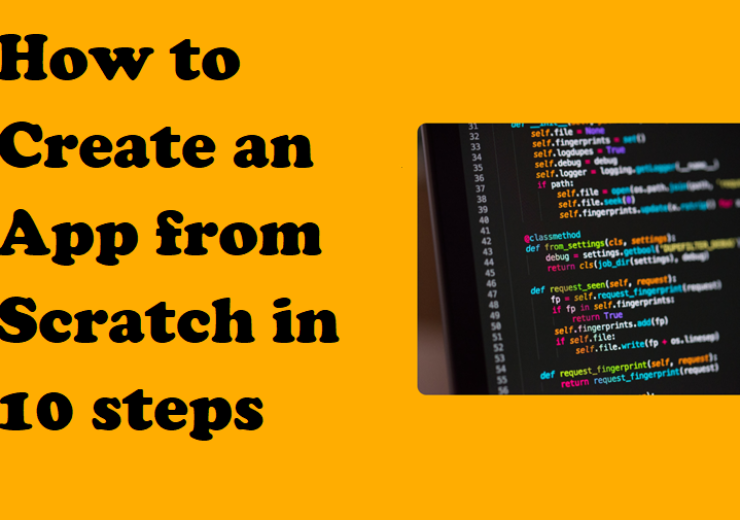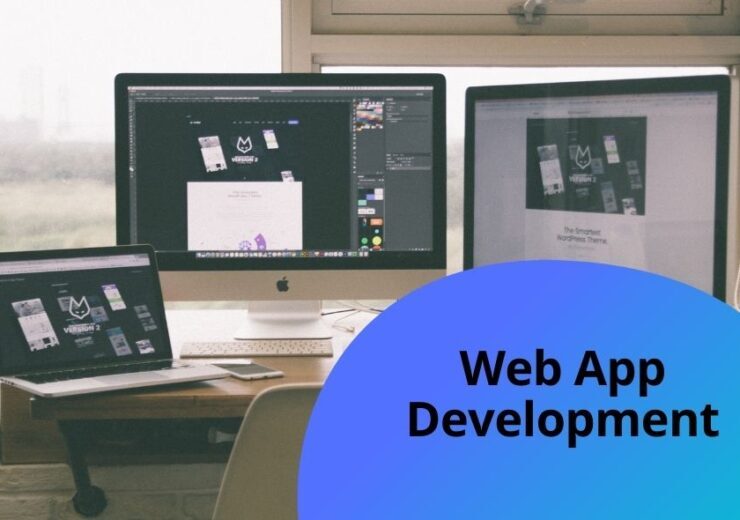Top Best Framework for Android App Development in 2022

There are many choices when it comes to choosing a framework for your Android app development project. Here, I’ll discuss the top choices: Sencha Touch, NativeScript, Corona SDK, and Xamarin. As a developer, you should be aware of the benefits and drawbacks of each framework. These frameworks are best suited for different purposes. In addition to Android, they’re suitable for other operating systems, including iOS.
Sencha Touch
If you’re interested in developing Android apps, you’ll want to check out Sencha Touch. This high-performance HTML5 mobile application framework is used to create dynamic interfaces and world-class user experiences. It’s a top choice for enterprise application development, and its widget-packed libraries are suitable for all platforms. Plus, it offers enterprise-grade security. This article explores the reasons Sencha Touch will remain one of the top frameworks for Android app development in 2022.
With an open-source JavaScript-based framework and HTML5 technology, Sencha Touch offers comprehensive features for Android app development. Its apps showcase responsive touch features and fast operation. Another powerful cross-platform framework, Appcelerator Titanium, helps promote speedy app development with quick prototyping facilities. It also supports rapid deployment and testing. Choosing the right framework is crucial for any app’s development.
Unlike many other frameworks, Sencha Touch focuses on creating mobile apps. It also targets users with low-RAM devices. Using the SDK, it provides excellent code reusability. You can migrate your app code in stages and use the actual pattern for platform-specific code. The framework is also open source and features a single JavaScript codebase. It’s a popular choice for building mobile applications.
Sencha Touch has many benefits. The framework supports information-based Android apps and has over 50 UI components and native themes. It supports codeless UI and is especially beneficial for large-scale enterprise apps. Furthermore, Sencha Touch is compatible with a wide range of languages. As a result, developers don’t need an IDE to use it. Besides, it supports drag-and-drop assembly.
NativeScript
There are several reasons to use NativeScript, which can run across multiple platforms and has a large backend. It is also easy to use and is a great prototyping tool. Its simple interface makes it easy to learn, and it has a large community. Most of all, NativeScript makes creating high-end Android applications easy. If you want to start using NativeScript, consider hiring a development company.
The biggest advantage of using NativeScript is that it can be used to create a hybrid or cross-platform app. It supports Vue, TypeScript, and Angular, and is backed by a Bulgarian software company, Telerik. With this framework, developers can reuse a wide variety of plugins, resulting in progressive apps. In addition, it can be used to create apps for a variety of platforms.
The Sencha Touch SDK is another framework for building complex Android apps. It uses HTML5, CSS, and JavaScript files, and has almost 1,000 built-in APIs. It also includes a dynamic advertising platform and supports native UI and real-time testing. Sencha Touch is another framework that focuses on native mobile applications. The community has dubbed Sencha Touch one of the best Android frameworks of the next decade.
Flutter is a powerful Android framework. It streamlines the multi-platform development process. It also uses a 2D rendering engine called Skia, which mimics the look and feel of Apple’s Material Design. It also offers a robust testing framework, thanks to its hot reload feature. Its layered architecture allows for quicker component rendering, and is open source.
Corona SDK
A free and flexible Android SDK framework, Corona SDK has many advantages. Its syntax is simple and straightforward, making it a popular choice for common-purpose development and game development. In fact, this framework allows developers to develop applications ten times faster than other SDKs. Here are five reasons why Corona SDK is the best Android app development framework in 2022.
Corona SDK was originally developed for video game development. Its entire backend framework is built on Lua, a lightweight multi-paradigm language. It supports advertising and is designed for beginners. Corona SDK also comes with a comprehensive set of tools that make development a breeze. It is compatible with both desktop and mobile devices and is compatible with both. And, because it is free and open source, it’s compatible with all major browsers and mobile platforms.
Xamarin: Developed by Microsoft, Xamarin supports iOS, Android, Windows, macOS, and watchOS platforms. The frameworks can be used to develop cross-platform mobile apps. Its advantages are diverse and include the ability to build consumer and enterprise applications for multiple platforms. It’s a great choice for any Android developer. So what are the advantages of Corona?
Xamarin: Another cross-platform Android app development framework that supports native libraries and APIs. Xamarin also allows developers to write fewer lines of code than other platforms and delivers flawless native performance across platforms. Microsoft acquired Xamarin and now has 1.4 million developers in the community. You can check out the benefits of Xamarin here. And if you’re still unsure, you can always use a reputed Android app development company USA to assist you in your project.
Xamarin
With a staggering e-commerce market estimated to grow to 6.54 trillion USD by 2022, Xamarin development is on the rise. Smartphones are destroying desktops while apps are taking over websites. The rapid development of the Xamarin framework will drive cross-platform app development into the spotlight this year. In addition to enhancing cross-platform app development, Xamarin allows developers to easily share 75% of their code between platforms. Xamarin apps can even access native APIs and 2D graphics.
Because it uses familiar technologies, Xamarin allows developers to leverage existing skills rather than learning a new programming language. As a result, it is easier to maintain your apps than ever before. Additionally, because Xamarin apps are compatible with both iOS and Android devices, you won’t have to worry about the hardware limitations of your applications. Lastly, Xamarin offers good customer support and comprehensive documentation. Training is available to help developers get started on their first mobile app.
While Xamarin is free for individual developers, it may be costly for enterprise needs. Visual Studio Professional, for example, costs $1,199 for the first year and $2,569 for each year thereafter. Another disadvantage is that the Xamarin community is much smaller than the iOS or Android communities. Finding experienced Xamarin developers is also difficult. But with the help of Xamarin, you’ll never have to worry about running out of resources or budget for additional training.
With its cross-platform capabilities, Xamarin will continue to grow and expand. It’s not only better than React Native, it’s more efficient than both. It is even being used by companies like UPS. It delivers a significant portion of packages worldwide. The UPS mobile app uses Xamarin to create shipments on the go. The company also leveraged the platform to improve productivity. FreshDirect is one of the leading grocery delivery services. The grocery delivery service specializes in organic produce and custom-cut meats. FreshDirect has chef-prepared meals that you can order from a local farmer.
Titanium
There are a number of advantages of using the Titanium framework for Android app development. Developers can reuse 60 to 90% of their code for cross-platform development, making it easier to complete projects and meet deadlines. They can also reduce their dependency on paid support. For the most part, this framework is free to download. Developers can test it before purchasing it. If you need more features, you can also purchase it.
Compared to other frameworks, Titanium offers a rich set of features. With its cross-platform capabilities, developers can write apps once and run them on a wide range of devices. Developers can also take advantage of the native APIs on various platforms, which is a huge plus in today’s market. In addition, developers can easily migrate their code to various platforms with a single codebase.
The Titanium framework is open source and works well for developing Android apps. Developers can use JavaScript and native UI components to build applications. Titanium SDK is cloud-synced and enables developers to create native apps across multiple platforms. It also supports HTML5 and many basic web-development languages, making it possible to build multi-platform apps from a single code base. The benefits of Titanium include ease-of-use, flexibility, and an experienced community.
Titanium allows developers to create native apps using HTML, CSS, and JavaScript. Developers can create apps on any platform, including Android, iOS, OS X, Windows, Electron, and the Web. Cordova also includes a powerful platform-centered shell tools, platform-oriented CLI tools, and a comprehensive API. The Titanium framework provides developers with a streamlined and consistent way to extend an app’s functionality, while reducing development time.




